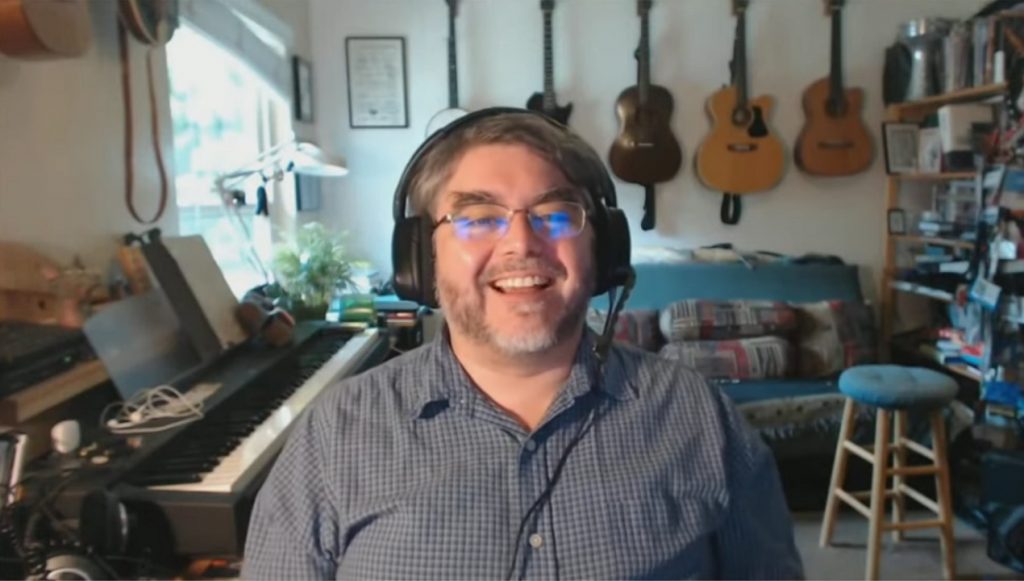by Raph Koster
Hi everyone,
I’m kicking off a little series of posts here on what our core game pillars are. These are the defining philosophies that animate everything in the game design. They tell us what the game is, and what the game is not.
When we do design work, we constantly look back at these core principles, and we check our work against them. We want to make sure that we are staying true to the ideas that sit at the center of the game, because all the game systems flow from these.
We didn’t just come up with these out of the blue. These were based on doing market research, looking at what things players have been asking for, what things have been missing from MMOs for a long time, and so on.
It was also based on dreams about what is possible now, with current technology. MMOs have been kind of stagnant, we feel. Back when I was working on Ultima Online we were dreaming of fully simulated worlds, worlds that could react to player actions. Instead, we have kind of settled into a mode where we as developers tend to make theme park rides for players, little canned experiences they run through, rather than alternate worlds.
So our first pillar to talk about is therefore this one. Before you read it I should say, it’s obviously aspirational, all these pillars are!
The Most Alive Online World Ever Created
The way we described this pillar to ourselves was this, which is actually cut and pasted directly from the internal development wiki. In fact, this is one of the oldest pieces of design documentation in the entire project, and predates any code being written at all!
Economic and environmental simulation will be the underlying substrate of the game, and players will be able to select from a wide array of ways to interact with the systems. Players will find themselves able to do things in the game that they have always expected: drop items, set fire to trees, and dig holes in the ground. They will find that the world does things they expect: wind might actually blow you around, you might slip off a steep slope, and snow will in fact pile up and bury things. Lastly and most importantly, player characters will be interconnected into a living society, with the intent of forming strong communities.
As you can see, we intentionally defined “alive” as including what players do, not just what the world does. If what players do affects the world, and what they do matters to each other, then the sense of it being an alternate place strengthens.
In fact, you’ve heard us talk about our living world simulation tech a lot, but the fact is that the economic simulation that players are participants in is just as important, even though it’s not nearly as visually cool.
From this high level pillar, we got three specific targets to aim at.
“The game will run off simulation.”
All the best toys are driven by simulation. Lego. Hot Wheels. Minecraft. The Sims. Having building blocks that interact with each other in magical ways is what encourages a playful attitude to the game, which then leads to players surprising us with emergence. (But we won’t be too surprised, because we are going to design for that emergence from the beginning). This then results in new ways to play, new ways for the game world to grow and flourish, and so on.
The tension between simulation and what I call “stagecraft” has a very long history in online game design in particular. If you use stagecraft, you are basically “faking” reality, in ways that help guide players. This is often really necessary – it’s very easy for players to feel like they are confused or lack guidance.
On the other hand, simulation, and consistent underlying rules, is where you get emergent gameplay from. This is both a blessing and a curse – it’s hard to predict the outcomes, and they could be good or bad for fun! So when you design in a simulationist way, you have to always temper your approach and think of how to end up with fun outcomes, as opposed to realistic ones. Realism is often not very fun.
Our core simulation is, of course, the environment. One of the questions that always comes up when we talk about our game with other developers is “what gameplay impact does that feature have?” And it’s the right question.
We don’t want to just have different types of dirt for no reason. They have to matter to a game system – such as farming. If we have different sorts of rock, the differences should matter – to crafting, say. If you can melt that rock, that can’t just be a cool gimmick with no purpose. It has to matter in terms of giving players fun things to do. Maybe you can melt stuff to the point where its transmogrifies into something else! Maybe you can melt holes in front of creatures so they fall in and die during combat!
The point being, having a simulation that exists but doesn’t provide gameplay is kind of pointless. We’re not building a science experiment, we are building a game.
“The game will be a true persistent state world.”
You can’t have real history without persistence. You can’t have pride of place. You can’t tie players into the world unless there is a world to tie them into. This is what allows the crazy experiment players made to stick around and be experienced by others. This is what drives returns out of nostalgia. This is what leaves traces of lore to be found.
By itself, this is a technical requirement. Not a small one, either! But it’s really about human behavior.
Worlds that are more theme parks don’t have history within the game. Oh, sometimes developers have done things like destroy a zone as part of an event, or have expansions alter the map that already exists. But small things don’t change day to day, and it means that players kind of just move through the environment.
When we explore the real world, a huge amount of what we enjoy finding is actually the traces of those who came before us. When we talk in the real world about our legacies, we are talking about the things that we leave behind for others to experience someday after we are gone. These are profoundly human feelings that games aren’t tapping into.
And yes, they create fun as well.
The history of online worlds is partly the story of slowly adding more and more persistence to the experience. In the earliest text based worlds, you only saved the state of your character. The world fully reset around you every once in a while. Eventually, this evolved into resetting each zone independently. I remember when the innovation of having repops per mob came along and it felt like the world had taken a big step forward is realism! (“Mob” is the term of art for “mobile object,” so think “monster or NPC”).
Similarly, we went from saving just what you carried (and often not all of it) to saving your corpse if you died, and then the contents of bank accounts, and so on. The definition of “your character state” got bigger over time.
These days, the largest way in which players tend to be able to modify the world is using a player housing system. But so many games tuck that away into an alternate dimension, basically, so that players don’t leave a trace. It’s really just a big inventory bag that looks like a house.
That’s really not all that human structures are, despite our habit of hoarding stuff. The monuments we leave behind are often public works, plazas and pyramids, theaters and halls of government.
And yeah, it’s okay if the works of players past, like those of Ozymandias, turn to ruins someday.
But it’s really the last one of these three where it all comes together.
As an MMO, we are a live service game, and that means that we live and die based on people coming back, making the game their hobby for extended periods of time. That’s just a survival thing, for any MMO. We have to design within business realities, not just for fun factor.
Luckily, the two can often coincide. But it means a big ol’ block of text! Remember, what you are about to read may sound like it’s cynical business talk, but it’s not.
“The game will be driven by player community and interdependence.”
Retention is driven by community above all. Social ties in the game are the biggest predictor of retention. Particularly now that streamers and the like are the biggest social hubs, replacing guild leaders, it’s incredibly important that we tie users to us, not to the streamer or celebrity.
When World of Warcraft launched, they made a point of stealing away all the high-end guild leaders from EverQuest. Similarly, we don’t want someone to be able to steal our audience by persuading streamers away from our game. We have designed this game so that people don’t identify with only one social hub. That’s why we have systems such as multiple guild membership that drive loyalty to multiple hubs.
People can be very important to your life even if they aren’t close friends. Think of that plumber or electrician you rely on, even though you don’t really know them. Those relationships are called “weak tie” connections, and despite the name, they actually make the social network stronger, reducing the dependency on central hub people. When people depend on you, you are less likely to leave.
Lastly, we are investing deeply into player cities, planetary governments, housing, and other permanence. It is all stuff you cannot take with you should you leave – and that makes you less likely to want to leave. By giving limited space per planet, we are preventing any given social hub from growing too large, and therefore too powerful.
These ties matter because they are actual human connections. It’s that healer you really trust in a fight to have your back. It’s that crafter who makes the best armor, the one you trust the most. It’s the person who shares similar play hours to you, and you come to know each other as friends. These are real ties, not fake ones. Real relationships.
It takes work for people to build up to these sorts of friendships, and in the real world, it happens gradually as people come to trust one another. How does trust building work? Well, it usually starts with forms of exchange – a service performed, a payment made. But from there it grows to include favors done and gifts given, and eventually confidences exchanged and feelings shared.
This is why the player economy, and people needing each other for varying goods and services, is so important. It’s an on-ramp to friendship.
So even though our need to have players commit to the game for a long while is a business necessity, it also serves a very real need for players: human connection. And really, that has been at the heart of the MMO genre all along. It is what distinguishes MMOs from other game types. MMOs are about the other people in the world, in the end. They are virtual places in which we happen to stick games.
But this is plenty long, so I’ll talk more about those games next time!


